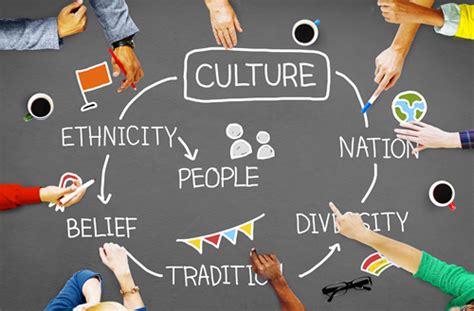In today’s interconnected world, cultural diversity plays a crucial role in shaping global business practices. From communication to negotiation, leadership to marketing, and innovation to creativity, understanding and adapting to cultural diversity is imperative for businesses operating on an international scale. This blog post aims to explore the myriad ways in which cultural diversity impacts global business practices. We will delve into the influence of cultural diversity on business communication, international negotiations, multinational team management, leadership styles, marketing strategies, and more. Additionally, we will discuss the challenges of cultural diversity in the workplace and how businesses can leverage it for innovation and creativity. Moreover, we will examine the importance of cross-cultural training and how to measure the return on investment of cultural diversity in global businesses. Join us as we uncover the significance of cultural diversity in shaping successful global business practices.
Table of Contents
Understanding Cultural Diversity in Global Business
Global business today operates in a diverse and multicultural environment, with people from various backgrounds working together. Cultural diversity refers to the differences in race, ethnicity, language, religion, and other aspects of human life. In the context of global business, it is crucial to understand and appreciate these differences in order to succeed in the international market.
One of the key aspects of understanding cultural diversity in global business is to recognize that different cultures have different values, beliefs, and attitudes towards work, communication, and decision-making. This can have a significant impact on how business is conducted and how relationships are formed. It is important for organizations to be aware of these differences and adapt their strategies accordingly.
Furthermore, understanding cultural diversity is essential for effective business communication in a global context. Different cultures have different communication styles, which can lead to misunderstandings and conflicts if not properly addressed. By being aware of these differences, businesses can tailor their communication strategies to be more inclusive and effective across cultures.
In conclusion, understanding cultural diversity is crucial for success in global business. It affects every aspect of business operations, from communication and negotiation to leadership and marketing. By recognizing and embracing cultural differences, organizations can leverage them as a source of innovation and creativity, leading to greater success in the international market.
Impact of Cultural Diversity on Business Communication
When cultural diversity is present in the workplace, it can have a significant impact on business communication. Different cultural backgrounds bring with them unique communication styles, nonverbal cues, and even language barriers that can affect how information is conveyed and understood within a team or organization.
These differences in communication can lead to misunderstandings, conflicts, and ineffective collaboration if not properly addressed and managed. For example, in some cultures, direct and assertive communication is valued, while in others, indirect and polite communication is the norm. Without awareness and understanding of these differences, messages can be misinterpreted and lead to breakdowns in communication.
Moreover, when conducting business communication across cultures, it is crucial to be mindful of language barriers and potential misunderstandings that can arise from linguistic differences. In some cases, a word or phrase that carries a certain connotation in one language may have an entirely different meaning in another, leading to unintended offense or confusion.
Overall, the impact of cultural diversity on business communication underscores the importance of developing cross-cultural communication skills, promoting open dialogue, and creating an inclusive environment where diverse perspectives are valued and respected.
Adapting to Cultural Diversity in International Negotiations
When engaging in international negotiations, it is crucial to adapt to the cultural diversity of the parties involved. Each culture brings its own set of values, communication styles, and negotiation tactics, which can greatly impact the outcome of the negotiation process.
Understanding and respecting the cultural diversity of the parties involved is essential in creating a conducive environment for successful negotiations. It requires a high level of empathy and flexibility to navigate through the differences and find common ground.
Additionally, it is important to be mindful of the potential misinterpretations that may arise from cultural differences in communication. Miscommunications can lead to misunderstandings, conflict, and ultimately, failed negotiations. Therefore, it is imperative to adopt a cross-cultural communication approach that takes into account the nuances of each culture’s communication style.
By adapting to cultural diversity in international negotiations, parties can build trust, foster positive relationships, and ultimately achieve mutually beneficial agreements. Embracing diversity in negotiations can lead to innovation, creativity, and a broader perspective, ultimately resulting in more successful outcomes.
Managing Cultural Diversity in Multinational Teams
Managing cultural diversity in multinational teams is a crucial aspect of global business operations. The ability to effectively manage diverse teams can lead to improved productivity, innovation, and overall success within the organization. It involves understanding, respecting, and leveraging the unique cultural perspectives and backgrounds of team members to create a cohesive and harmonious working environment.
One of the key challenges in managing cultural diversity in multinational teams is the potential for miscommunication and misunderstandings. Differences in language, communication styles, and nonverbal cues can often lead to conflict and friction within the team. It is important for team leaders to facilitate open and transparent communication, encourage active listening, and provide training on effective cross-cultural communication to mitigate these challenges.
In addition, managing cultural diversity in multinational teams requires a deep understanding of cultural norms, values, and customs. Leaders must be able to adapt their management and leadership styles to accommodate the diverse needs and expectations of team members from different cultural backgrounds. This may involve implementing flexible work schedules, recognizing and celebrating cultural holidays and traditions, and creating an inclusive and supportive work environment for all team members.
Ultimately, successful management of cultural diversity in multinational teams can lead to a competitive advantage for the organization. By embracing and leveraging the diverse perspectives and talents of team members, organizations can foster creativity, innovation, and a deeper understanding of global markets and consumer preferences. This can result in improved decision-making, problem-solving, and overall performance, ultimately contributing to the long-term success of the business.
Effects of Cultural Diversity on Leadership Styles
Effects of Cultural Diversity on Leadership Styles
Leadership styles are greatly influenced by the cultural diversity present within a team or organization. The diversity of backgrounds, perspectives, and values can significantly impact how a leader approaches decision-making, conflict resolution, and team management. In a diverse environment, leaders must be adaptable and open-minded to effectively engage with and motivate their team members.
Some leadership styles may be more effective in certain cultural contexts, while others may be less impactful. It’s important for leaders to recognize the impact of cultural diversity on their leadership styles and be willing to modify their approaches to better suit the needs of their team. Cultural diversity can also bring about a greater range of ideas and solutions, leading to more innovative and creative leadership strategies.
Additionally, a diverse team can pose unique challenges to a leader, such as language barriers, communication differences, and conflicting interpretations of roles and responsibilities. These challenges can influence a leader’s ability to effectively delegate tasks, provide constructive feedback, and build trust within the team.
Ultimately, understanding the effects of cultural diversity on leadership styles is crucial for successful teamwork, collaboration, and overall organizational performance. Embracing diversity can lead to a richer and more impactful leadership approach that fosters inclusivity, creativity, and growth.
Incorporating Cultural Diversity in Marketing Strategies
When it comes to marketing strategies, it is essential to consider cultural diversity in order to effectively reach and engage diverse target audiences. By incorporating cultural diversity in marketing strategies, businesses can create more inclusive and relevant campaigns that resonate with different cultural groups.
One way to incorporate cultural diversity in marketing strategies is to conduct thorough research on the cultural backgrounds, values, and preferences of the target audience. Understanding the nuances of different cultures can help businesses tailor their messaging, product offerings, and branding to better align with the needs and expectations of diverse consumers.
Another effective approach is to diversify the marketing team itself, ensuring that there is representation from various cultural backgrounds. This can bring different perspectives and insights to the table, leading to more authentic and culturally sensitive marketing campaigns that speak to a wide range of audiences.
Additionally, businesses can collaborate with local influencers, community leaders, and cultural organizations to gain insights and support for their marketing efforts. By engaging with community stakeholders, businesses can build trust and credibility within diverse communities, ultimately strengthening their brand presence and impact.
Cross-Cultural Training for Global Business Success
In today’s globalized world, businesses are increasingly expanding their operations across different countries and cultures. As a result, there is a growing need for cross-cultural training to ensure the success of global businesses. This type of training equips employees with the necessary skills and knowledge to effectively navigate and communicate in diverse cultural settings.
Cross-cultural training helps employees develop a deeper understanding and appreciation for cultural diversity, which is essential for fostering positive relationships with international clients and partners. By learning about different cultural norms, customs, and communication styles, employees can avoid misunderstandings and conflicts that may arise in cross-cultural interactions.
Furthermore, cross-cultural training can also improve the overall performance and productivity of multinational teams. When employees are equipped with the ability to work effectively with colleagues from different cultural backgrounds, they are better able to collaborate, problem-solve, and innovate, leading to greater business success.
Ultimately, investing in cross-cultural training for employees is crucial for the global success of businesses. It not only helps to overcome cultural barriers and challenges but also enhances the organization’s reputation as a culturally competent and inclusive entity, which can lead to greater opportunities and growth in the international market.
Overcoming Challenges of Cultural Diversity in the Workplace
Managing a diverse workforce in today’s globalized business environment can be a challenging task for many organizations. Cultural diversity in the workplace brings with it a myriad of benefits, but it also presents numerous challenges that need to be addressed in order to create a harmonious and productive work environment.
One of the main challenges of cultural diversity in the workplace is the potential for miscommunication and misunderstandings. Different cultural norms and communication styles can lead to conflicts and tension among employees, affecting their productivity and overall satisfaction in the workplace.
Another challenge is the potential for unconscious bias and discrimination. Employees from different cultural backgrounds may be subjected to unfair treatment or microaggressions, which can harm their professional development and well-being.
Furthermore, managing diverse teams may also require extra effort in terms of understanding and accommodating different cultural values and practices. This can be challenging for managers and team leaders who are not well-versed in cross-cultural management.
Leveraging Cultural Diversity for Innovation and Creativity
Cultural diversity in the workplace offers a unique opportunity for organizations to leverage different perspectives and ideas to drive innovation and creativity. By embracing and valuing diverse cultural backgrounds, businesses can tap into a wealth of knowledge and experiences that can lead to groundbreaking solutions and products.
One of the key ways to leverage cultural diversity for innovation and creativity is through fostering an inclusive work environment where individuals feel free to express their unique viewpoints without fear of judgment. This can create a culture of openness and collaboration, where ideas can flow freely and be combined in new and novel ways.
Furthermore, bringing together team members with diverse cultural backgrounds can lead to the development of creative solutions that cater to a wider range of customer needs. By understanding and incorporating different cultural perspectives, businesses can ensure that their products and services are relevant and appealing to a global audience.
In conclusion, leveraging cultural diversity for innovation and creativity is not only beneficial for the success of a business, but also for the personal growth and development of its employees. Embracing diverse cultural perspectives can lead to a more dynamic and forward-thinking workplace that is better equipped to anticipate and respond to the ever-changing needs of a global market.
Measuring the ROI of Cultural Diversity in Global Businesses
Measuring the return on investment (ROI) of cultural diversity in global businesses is crucial for understanding the impact that diversity has on a company’s bottom line. It goes beyond just the tangible financial gains and delves into the overall value that a diverse workforce brings to an organization.
By quantifying the effects of cultural diversity on various aspects of a business, such as employee engagement, productivity, and innovation, companies can gain a better understanding of how diversity contributes to their overall success.
One way to measure the ROI of cultural diversity is by assessing the impact of diversity initiatives on the company’s performance metrics. This can include looking at the diversity of the talent pool, employee retention rates, and customer satisfaction levels.
Additionally, companies can conduct surveys and focus groups to gather feedback from employees and customers about their experiences with cultural diversity within the company, providing valuable qualitative data that complements the quantitative measurements of diversity’s ROI.





